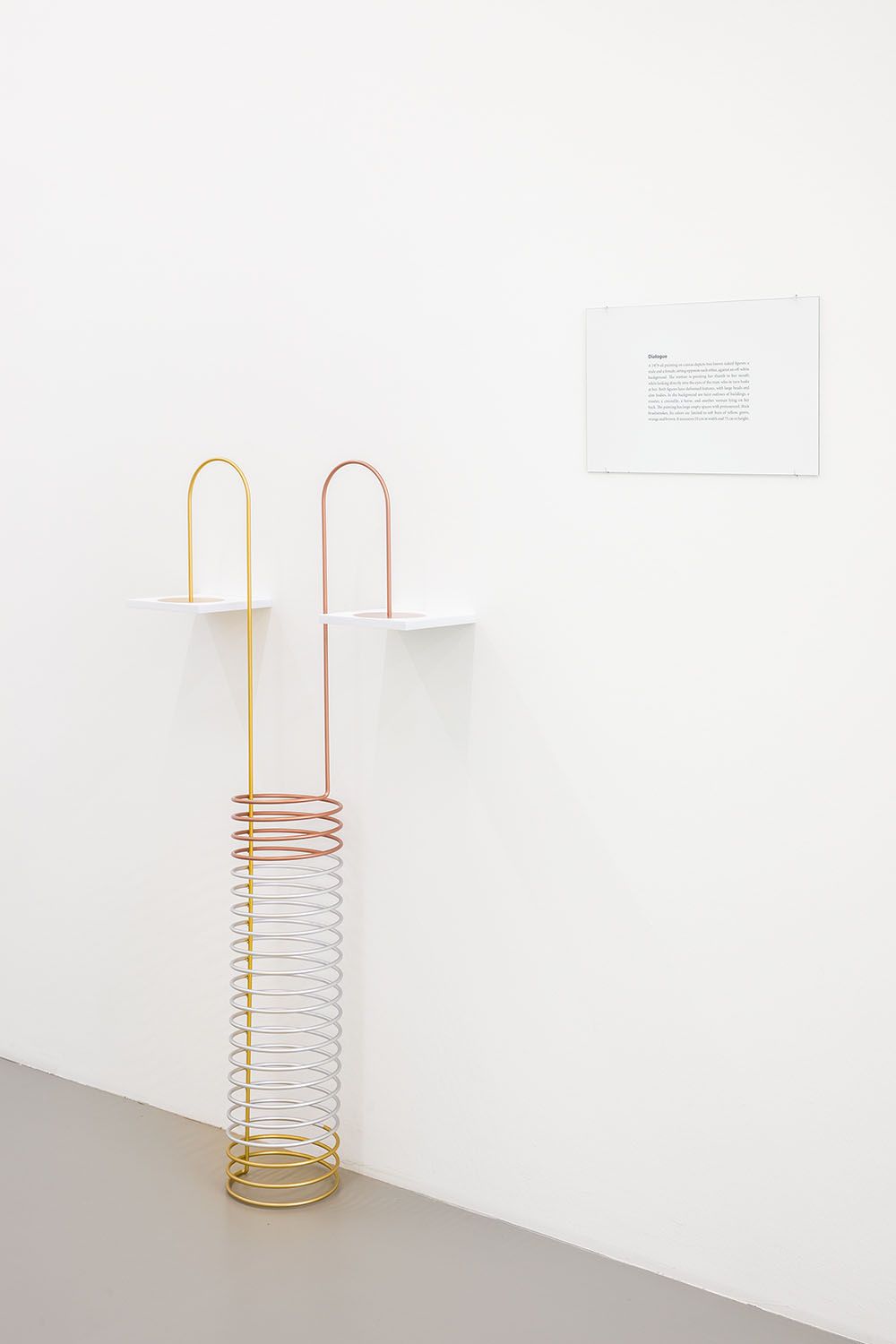Egypt / USA, Visual Arts, 2017
Iman
Issa
The difference between determining and recognizing is a central aspect in Iman Issa’s work—one is based on descriptive facts, the other on memory and association. Born in 1979 in Cairo and living in New York and Cairo, the artist explores in her installations of objects, sculptures, photography, video, sound, and writing the interactions between text and image, as well as the gaps between memory, fiction, and historiography. The visual grammar of museum presentations is the subject of her investigations. Over the past several years, however, her focus has shifted from historical events and biographies from the Arab cultural sphere and their monuments and memorials to the formal language of artifacts.
Material (2010–12) consists of a total of ten displays with text panels and various objects, which can be read as proposals for alternative public monuments, in which the accompanying texts represent the title, description, and a riddle: “Material for a sculpture proposed as an alternative to a monument that has become an embarrassment to its people” appears on the panel positioned next to a table with two spherical lights, which go on and off in alternation. “Material for a sculpture commemorating an economist whose name now marks the streets and squares he once frequented” describes a display case featuring the personal items of a likely older gentleman, including a pair of leather shoes, a pocket watch, and a photo album. One can speculate on which concrete monument, which historical event, which movement or person is intended, but neither the displays nor the text panels provide this information. Thirty-Three Stories about Reasonable Characters in Family Places (2011), a book of one-page fictional short stories, functions in a similar way—somewhat like Italo Calvino’s novel Invisible Cities. The artist regards it as both a literary and artistic work. Without naming something specifically, vague descriptions of individual memories and personal experience give rise to images of places, persons, or situations.
A selection of works from the second half of the twentieth century, whose titles consist of single words, forms the starting point for Lexicon (since 2012). Without providing images or additional information as to the context, year of origin, and materials of the reference works, Issa presents her own, abstract-minimalistic formal implementation of terms such as “work” [Laboring (Study for 2012), 2012] —an abstract wooden sculpture recalling the shape of an hourglass—or “monologue announcer” [Monologist (Study for 2014), 2014]—a cone attached vertically to a tripod.
Similarly, the latest series, Heritage Studies (since 2015), deals with the exploration of cultural heritage, the applicability of academic knowledge, and the use of history. The sculptural reinterpretations of historical artifacts investigate the act of perception itself and question their significance for our understanding of the present. Without wanting to imitate, Issa’s sculptures, in terms of form, size, and material, refer to the information provided in the scientific labels but subject them to a transformation both abstract and poetic.
Text: Eva Scharrer




